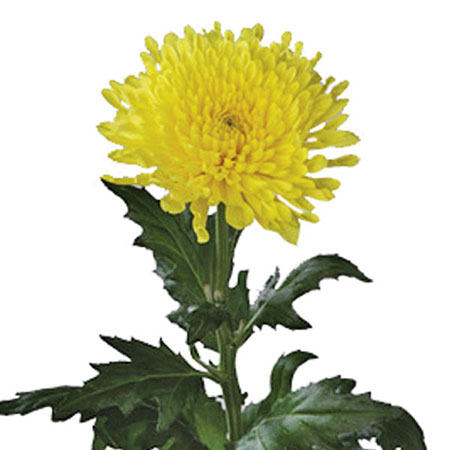1) Aloe
It's one of the best plants to keep
in every bedroom.
It absorbs benzene, formaldehyde and carbon
monoxide. The gel from Aloe Vera has been found to multiply the
oxygen transportation and diffusion capabilities of red blood
cells.
Because it contains several mineral
ions which aid the body in fluid transport and regulation,
consumption of Aloe Vera juice can help you to eliminate toxins
more efficiently through your skin via sweat.
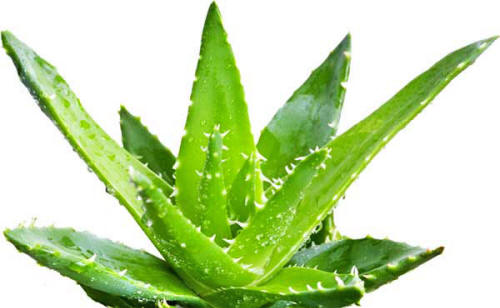
2) Garden Mum
In the NASA research, this plant was
an air-purifying champion, removing,
...from indoor air.
Popular and inexpensive at garden
stores, they can be planted outside after they're finished
blooming.
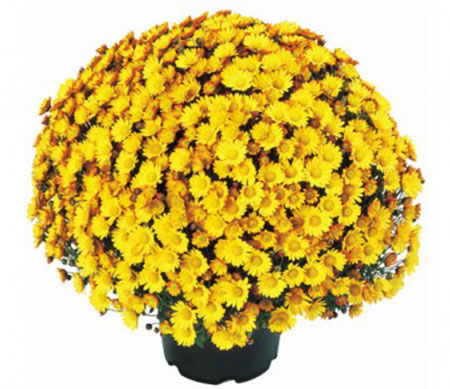
3) English Ivy (Hedera Helix)
A clinging evergreen vine, Ivy
removes benzene, formaldehyde, trichloroethylene and xylene from
indoor air.
It is widely cultivated as an
ornamental plant and not always suitable for indoors, English
Ivy can grow up to 100ft if left unchecked.
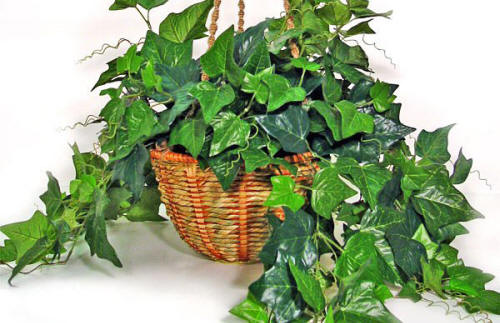
4) Spider plant (ChlorophytumComosum)
Spider plants are among the easiest
houseplants to grow, making them a great choice for beginners or
forgetful owners.
They are able to perform
photosynthesis under minimal light. One plant is enough to clean
the air in up to 200 square meters. It removes formaldehyde and
xylene.
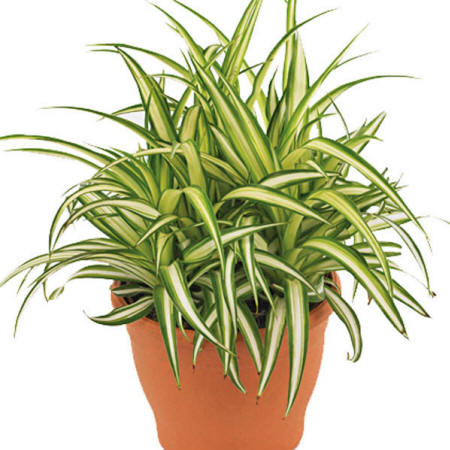
5) Dracaena
There are more than 40 different
kinds of
Dracaena plants, making it easy to find one that's a perfect
fit for your home or office. They're common foliage plants with
long, wide leaves that are often variegated with lines of white,
cream, or red.
Pet owners might want to select a
different plant, however, as these are
toxic to cats and dogs. It removes benzene, formaldehyde and
trichloroethylene.
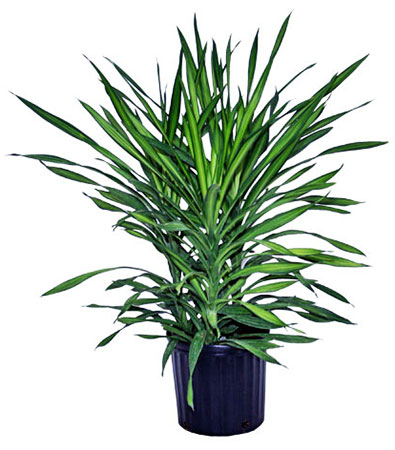
6) Ficus (FicusElastica)
Also known as "rubber plant", it is
grown around the world as an ornamental plant. In cultivation,
it prefers bright sunlight but not hot temperatures.
It is quite effective in purifying
the air of formaldehyde.
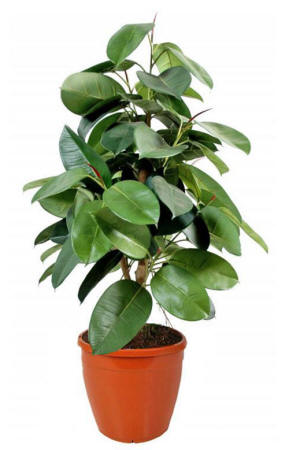
7)
Ficus (Ficus Benjamina)
Though the ficus is a tree in its
native home of southeast Asia, when it grows indoors, it's a
hardy plant that ends up being between two and 10 feet tall.
So why not get figgy with it? Grow
this low-maintenance houseplant in bright, indirect light and
allow the soil to dry out between waterings.
Although this plant has some serious
air-cleaning abilities, it can also be taken outside in late
spring and brought back indoors when temperatures are warm and
well above freezing.
It removes benzene, formaldehyde, and
trichloroethylene.
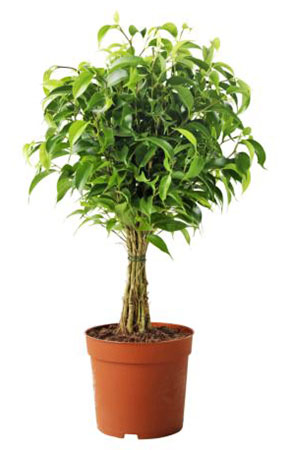
8) Snake
planet (SansevieriaTrifasciata)
This is one of the hardest
houseplants to kill.
Although it does need to be watered
occasionally, it generally prefers drier conditions and some
sun. It is excellent for the bedroom as it produces oxygen
during the night.
It removes benzene, formaldehyde,
trichloroethylene, and xylene.
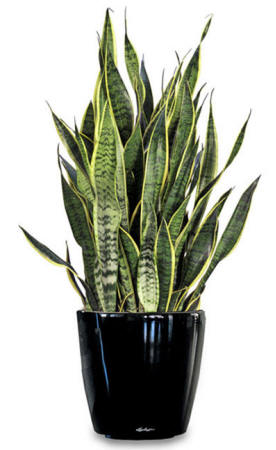
9) Bamboo Palm (Chamaedorea Seifritzii)
A superstar of filtering
formaldehyde, these palms thrive in full sun or bright light.
Part of the reason they can filter
so much air is that they can grow to be pretty big - as tall as
four to 12 feet high, making them exciting (and
pet-friendly) indoor additions.
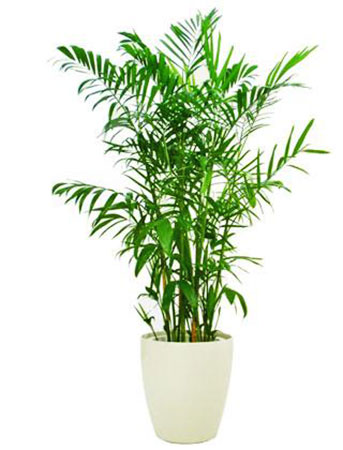
10) Peace lilies (Spathiphyllum)
It removes benzene, formaldehyde,
trichloroethylene, ammonia and xylene from the air. It lives
best in shade and needs little sunlight to thrive, and is
watered approximately once a week.
The soil is best left moist but only
needs watering if the soil is dry. Spathiphyllum is mildly toxic
to humans and animals when ingested.
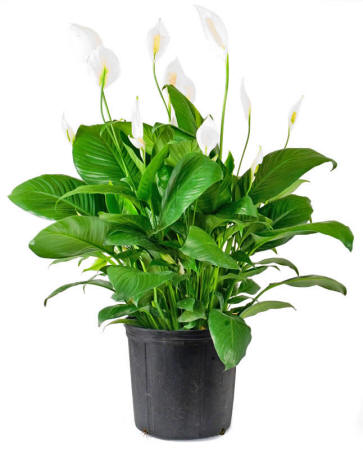
11) Boston Fern (Nephrolepis Exaltata)
These plants prefer to clean the air
from a cool location with
high humidity and indirect light.
They're relatively easy to grow, but
they do need to stay moist. Check the Boston Fern's soil daily
to see if it needs water, and give it a good soak once per
month.
It remove formaldehyde and xylene.
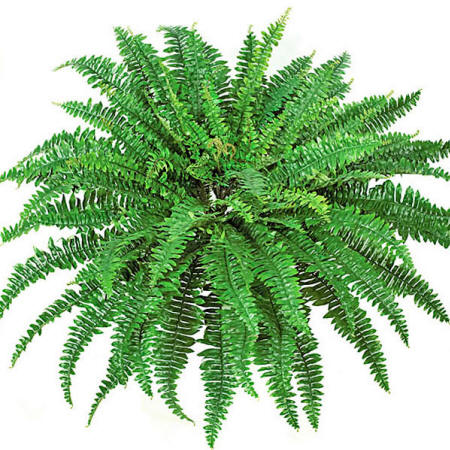
12)
Chrysanthemum Morifolium
Also called Florist's daisy it has
risen in popularity as an indoor houseplant in part because of
its air cleaning qualities as
per a study done by NASA, removing trichloroethylene,
benzene, formaldehyde, ammonia, and other chemicals from the
air.
In general, the plant is best
fertilized once a month and watered two to three times a week
depending on climate.
